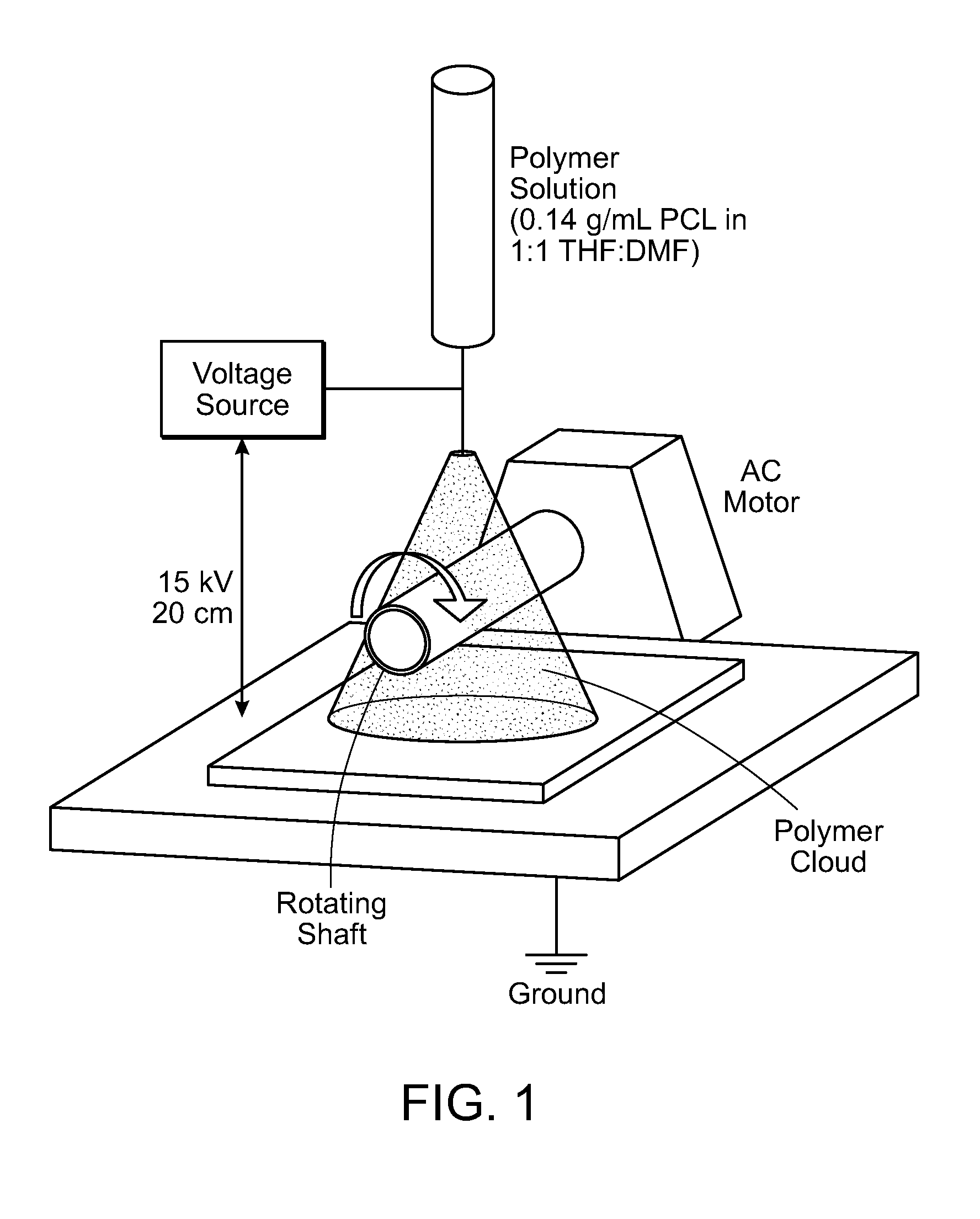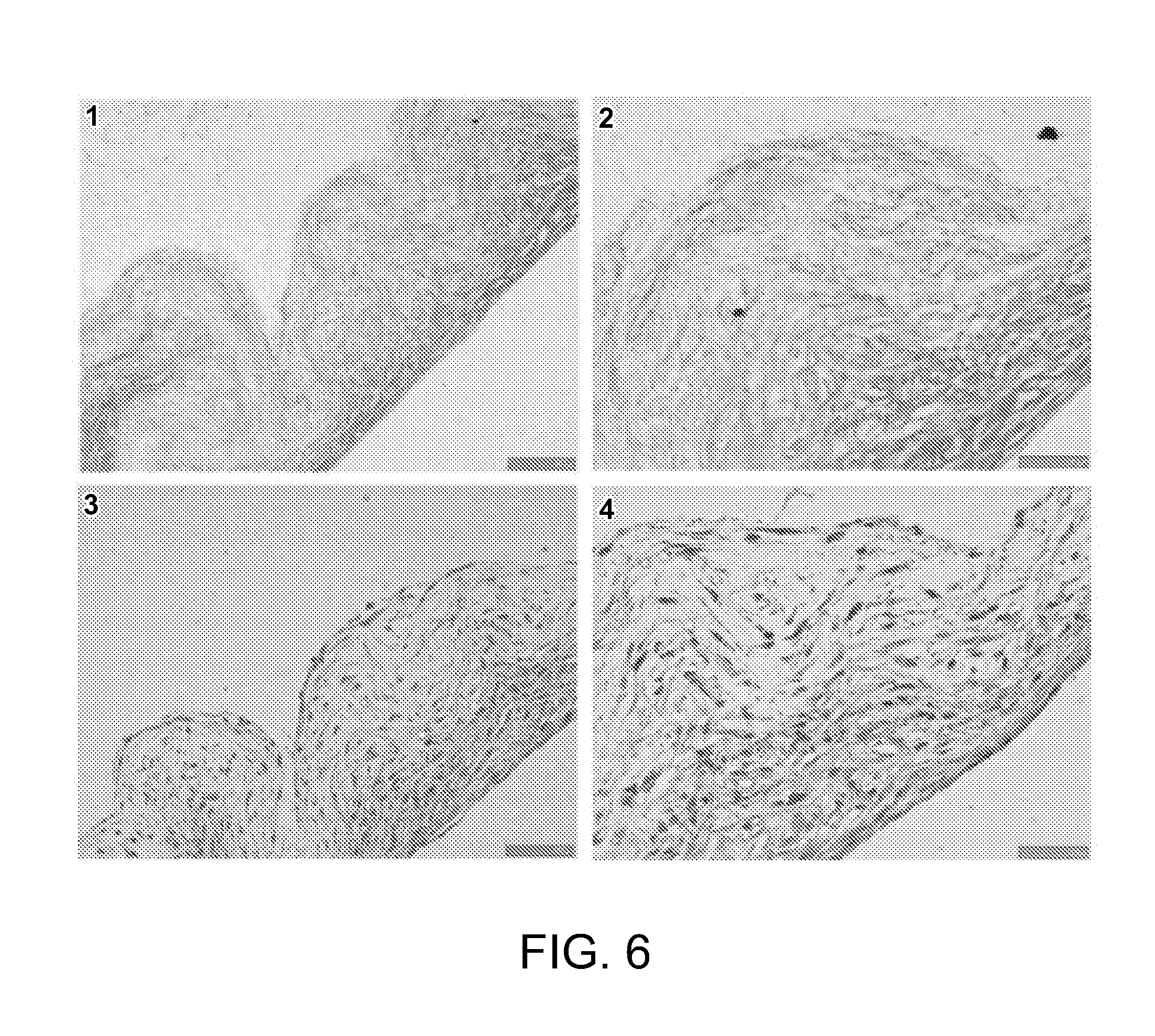Cell-nanofiber composite and cell-nanofiber-hydrogel composite amalgam based engineered intervertebral disc
a technology of cell-nanofiber and composite resin, which is applied in the field of tissue engineered intervertebral discs, can solve the problems of adjacent segment disease, biomechanics of the disc, and further degeneration, and achieve the effect of increasing the interfiber distance and facilitating cell growth and differentiation
- Summary
- Abstract
- Description
- Claims
- Application Information
AI Technical Summary
Benefits of technology
Problems solved by technology
Method used
Image
Examples
example 1
Isolation and Culture of Bone Marrow-Derived hMSCs
[0108]With approval from the Institutional Review Board of Thomas Jefferson University, bone marrow-derived hMSCs were obtained from the femoral heads of subjects undergoing total hip arthroplasty, and processed as previously described (Noth U, et al. J Orthop Res 2002; 20:1060-9; Haynesworth S E, et al. Bone 1992; 13:81-8; and Wang M L, et al. J Orthop Res 2002; 20:1175-84). Briefly, whole bone marrow was curetted from the exposed cutting plane of the femoral neck, washed extensively in Dulbecco's Modified Eagle's medium (DMEM; BioWhittaker, Walkersville, Md.), separated from contaminating trabecular bone fragments and other tissues using a 20-gauge needle attached to a 10-cc syringe, and cultured in DMEM, 10% fetal bovine serum (FBS) from selected lots (Caterson E J, et al. Mol Biotechnol 2002; 20:245-56), and antibiotics (50 μg / mL streptomycin, 50 IU / mL of penicillin) at a density of 4×105 cells / cm2. Forty-eight hours post-plating...
example 2
Fabrication of Electrospun Nanofibrous PLLA Scaffolds
[0109]Nanofibrous scaffolds were fabricated according to an electrospinning process described previously (Li W J, et al. J Biomed Mater Res 2003; 67A:1105-14). Briefly, PLLA polymer was dissolved in an organic solvent mixture (10:1) of chloroform and N, N, dimethylformamide (DMF) at a final concentration of 0.14.5 g / mL. The polymer solution was delivered through the electrospinning apparatus at a constant flow rate of 0.4 mL / h under an applied 0.8 kV / cm charge density, resulting in a 144 cm2 mat with an approximate thickness of 1 mm. To remove residual organic solvent, the non-woven polymer mat was placed within a vacuum chamber for 48 h, and subsequently stored in a dessicator. Prior to cell seeding, nanofibrous scaffolds were fashioned from the electrospun mat, sterilized by ultraviolet irradiation for 30 min per side in a laminar flow hood, and pre-wetted for 24 h in Hanks' Balanced Salt Solution.
example 3
Fabrication of Intervertebral Disc (IVD) Constructs
[0110]To make ND constructs, PLLA nanofibers were electrospun onto a rotating rod (shaft) to produce homogeneous, non-woven or specifically oriented nanofibrous mats (FIG. 1), whose shape was dependent on the mechanical requirements for a construct. After pulling out the rod, a long hollow nanofibrous tube (FIG. 2) with the outer diameter of 1.1 cm and the inner diameter of 1.0 cm was produced. Nanofibrous rings with the height of 0.5 cm were obtained from cutting the nanofibrous tube into sections (FIG. 3). The open-to-outside ring was sealed with a circular nanofibrous mat with the diameter of 1.1 cm on each end of the ring after being inserted with fluffy nanofibers (FIG. 4). The inserted nanofibers with a loosened fiber structure serve the roles of mechanical reinforcement and biological enhancement.
[0111]A hydrogel such as hyaluron gel was mixed with nucleus pulposus cells isolated from human ND, and was injected into the empty...
PUM
| Property | Measurement | Unit |
|---|---|---|
| size distribution | aaaaa | aaaaa |
| porosity | aaaaa | aaaaa |
| porosity | aaaaa | aaaaa |
Abstract
Description
Claims
Application Information
 Login to View More
Login to View More - R&D
- Intellectual Property
- Life Sciences
- Materials
- Tech Scout
- Unparalleled Data Quality
- Higher Quality Content
- 60% Fewer Hallucinations
Browse by: Latest US Patents, China's latest patents, Technical Efficacy Thesaurus, Application Domain, Technology Topic, Popular Technical Reports.
© 2025 PatSnap. All rights reserved.Legal|Privacy policy|Modern Slavery Act Transparency Statement|Sitemap|About US| Contact US: help@patsnap.com



